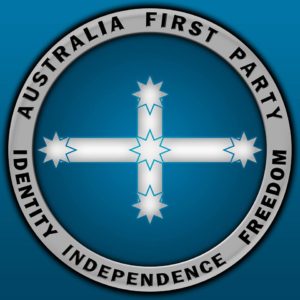by Dr. Jim Saleam
‘A leftist has composed an article on the Eureka Flag . It told the truth about this icon, albeit in an upside down and inside out sort of way. When the court-room-based history wars get going over the Eureka Flag next year, after Catherine King MP for Ballarat presents her Bill that will allow groups and persons to challenge Australia First Party’s electoral logo which contains the Eureka Flag – that leftist may be a useful witness.
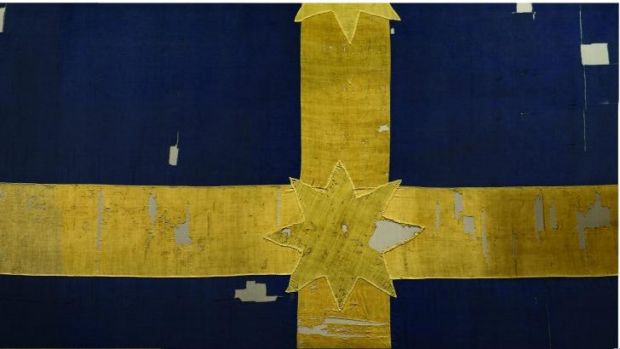
Now the ‘witness’, Angela Mitropoulos, is an academic of the Trotskyite persuasion and her evidence may be that of a ‘hostile witness’ (in every sense of that term), but it may be decisive evidence.
Historically, it has generally been the position of Trotskyite communists on our local ‘Aussie’ Left, that the Eureka Flag, like the events it was born in, was part of a nationalist tradition and nationalism was the ‘enemy’ of the mythic ‘working class revolution’ they claim to represent. After all, Marx said it that ‘the workers have no country’ and that communism would be constructed across national boundaries. Necessarily, any attempt to ‘nationalize’ the workers was to be condemned.
In 1979, one group of Trotskyites published ‘Socialism Or Nationalism: Which Way For The Australian Labour Movement?’ They railed against any leftist who even remotely conceded to a national interest and against those of the day who thought they could use the Eureka tradition for communist ends.
Of course, times have moved on and Stephen Jolly, another species of Trotskyite, said not too long ago that the Eureka Flag might make a great State flag for Victoria.
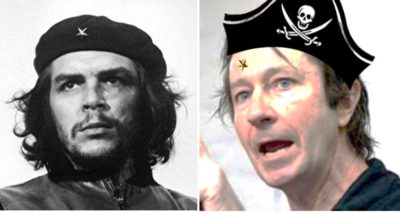
Others have said it has played a part in trades union affairs and could be seen as a ‘union symbol’ and be separated totally from the nationalists who lay claim to it. Of course, I suspect that these allusions to the Eureka Flag are really just a means to limit the nationalists from possessing a legitimate national symbol, to muddy waters and so on.
In that vein, this week, I must address a case in the Administrative Appeals Tribunal whereby an individual says that the Australian Electoral Commission wrongly registered the Australia First Party logo. It is expected this case will fail – a matter that opens the way to legislation in 2019.
So we will have to fight over history and as said, Angela Mitropoulos has given us some ammunition.
So what does our Trotskyite academic say of the Eureka Flag?:
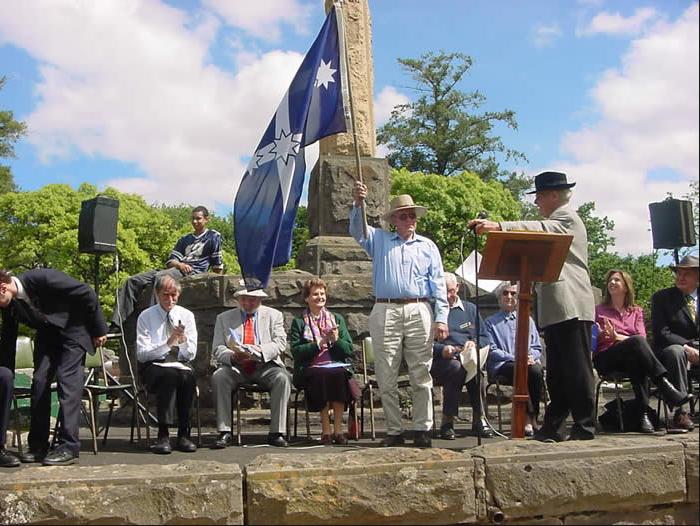
“It is a symbol of white Christian men finding their ideological and property-owning bearings in the colonies of the Southern Hemisphere. As with much Christian nationalist symbolism, it explicitly centres on a narrative about the sacrificial shedding of blood, the storied origin of white Australian nationalism—and it is a story in which the ‘blood’ and lives of white men are figured as more important than that of others ….”
Such hate of men and white men – and Christians! Yet, what else were those “who saw the nation born” (Lawson)?! So what is wrong from our perspective of sacrifice in blood? And why should the ordinary ‘man’ (we would also say, woman) not own some property? Do we mean bourgeois estates – or just some personal property? And are our lives not important when we barter them for freedom?
What does Mitropoulos say of the debate within the Left about Eureka?:
“Running through many of these debates is a refusal to reckon seriously with the racist organisation of dominant ‘anti-imperialist’ sentiment in settler colonies such as Australia, which is to say: the alignment of a sense of white entitlement to occupy and extract value from colonised lands with ‘anti-imperial’ or republican sentiments of self-government…”
Yes, the Left is told to stick to internationalism.

Sadly translates as: “I have no home”
Yet, if free ‘White’ men tale up the cudgels of civilisation, why do they not have the right to create nations? And nations free of empires?
Then we get hard facts about Eureka Stockade:

A battle between British Empire Whites and independent Whites, while non-Whites watch on to learn
“Nor was it unconnected to the growing number of attacks in Victorian and other goldfields against Chinese miners (in the nearby Bendigo goldfields in 1854 a meeting declared that a “general and unanimous rising should take place … for the purpose of driving the Chinese off the goldfield.”) When Peter Lalor, one of the founders of the Ballarat Reform League, enjoined people to pledge allegiance to the Eureka flag “to fight to defend our rights and liberties,” he meant the property rights of white men over the colonies and their liberty to extract gold from it.”
More or less true, Lalor did mean that. He certainly did not mean, could not have meant, he was a multicultist or a multiracialist. The mobilisation against the Chinese was the guts of miners’ sentiment. Mitropoulos admonishes the Left to hate Eureka because of the anti Chinese sentiment of the miners. Indeed, such a sentiment has zero to do with the Left. It has everything to do with a nationalist popular struggle. It has everything to do with identity politics.
What did these bad White men want?
“The Eureka rebellion is a story about entitlement to land ownership, and the correlate of political representation, by white men.”
Again, nought to do with the Left. Everything to do with the formation of what the Labour Party and for the equality of the voters – something also extended to women which is often ignored by Trotskyite ‘feminism’.
The Trotskyite position is a grand (sic) narrative which involves not only the nationalists, but a few recalcitrant leftists who may make a concession to it – so Mitropoulos would blast it with a flamethrower-tirade, to clear it away for a pure internationalism:
“Despite this, the story of the Eureka rebellion is persistently rewritten as an inclusive and heroic narrative about ‘underdog’ resistance to imperial power. That revision is accomplished by, first, effacing its pivotal claim to white, ‘self-governing’ and entrepreneurial masculinity (and conflating that with an idealised history of unions in Australia, conflated in turn with the workers’ movement) and, secondly, a convenient forgetting that the Eureka flag was the banner under which attacks against Chinese people occurred at the Lambing Flats goldfields some six years later.
The Eureka rebellion and the racist attacks at Lambing Flat are not unconnected events, symbols or politics; they were carried between goldfields by miners themselves, and into nascent trade union organisations and the Labor Party, which adopted the goal of a ‘White Australia’ as one of its central planks.”
It is very clear to me, ‘poor historian’ though I may be, that Eureka Stockade and Lambing Flat were connected historical dramas and the flag of the latter was a version of the Eureka Flag.
As Jack Lang put it succinctly, contributed each in its own way to “free labour” in the colonies of New South Wales and Victoria. This will be a vital point in the future court-room battles as much as it is now at street level.
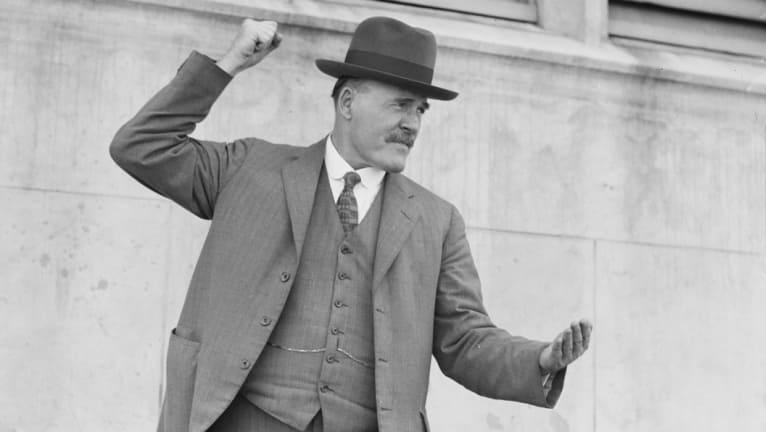
That being so, any leftist attempt to corrupt the meaning of Eureka Stockade drops dead and the essential honesty of Mitropoulos is to be commended. But then Mitropoulos reminds us of a documentary source that lays bare the miners’ cause:
“Indeed, the Eureka rebellion crystallised the demand for a ‘White Australia’ policy. The Report of the Goldfields Commission after the Eureka rebellion acknowledged the racist “grievances” of those who had flown the Eureka flag and recommended the restriction of Chinese migration …”
If the Left knows this and any section still uses the Eureka Flag, then it would be part of the ‘game’ which disputes the Flag with the nationalists – but only to muddy the waters. Yet, I suspect many don’t know this. The connection between Eureka Stockade and the anti-Chinese-immigration movement fleshes out our case.
Of course, it is always part of the rhetoric of the Trotskyites (and others on the Left) that ‘racism’ means hateful violence and by dumping this on good leftists, they’ll drop Eureka Stockade mythology at once. For the nationalists, the organization of violence may well be a politics of self-defence and a mobilisation in a higher cause.
Mitropoulos adds:
“While it is often called one of Australia’s first unions, in reality the Miner’s Protective League operated as a racist militia on the goldfields and surrounding areas, and its central demands were the forcible expulsion of Chinese people, the ‘protection’ of European workers, the promotion of Christianity and, not least, the preservation of order and the protection of the property and the rights of white men.
The most prominent of these attacks (of which there are some records) were those at Turon in 1853, Meroo in 1854, Rocky River in 1856, Buckland River in 1857, Tambaroora and Ararat in 1858, Lambing Flat, Kiandra and Nundle in 1860 and 1861, and Tingha in 1870.”
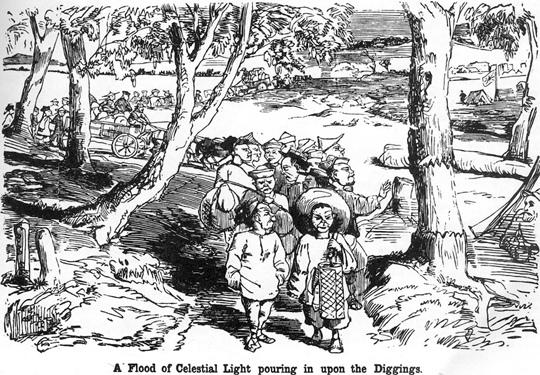
So we see that White Australia, as proclaimed law at Federation in 1901, was the finalisation of a process that began on the goldfields and the Eureka Flag was its essential icon.
If we can telescope events forward in time to the present and not only to ‘debates’ within the Left over Eureka, or between the Left and the nationalists, but to the essential discussion about ‘protecting’ the Euro-Australian identity – then the history is a signpost to the future. The miners’ struggles of the nineteenth century are our predecessor explosions of political activism.
For us, a party at the centre of a future civil uprising, can guarantee the Australian identity. And the Eureka Flag is its symbol.
The case against our claim to the Eureka Flag – is dismissed.’
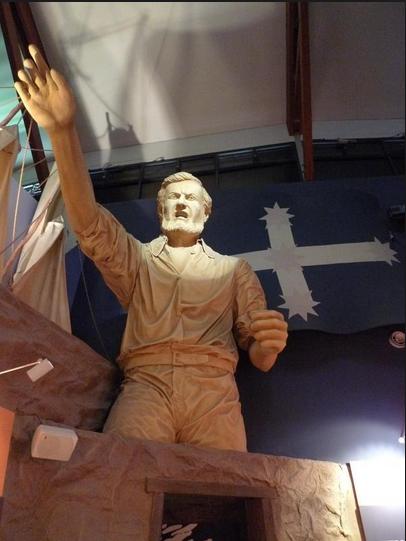
Australia First Party celebrating truth in transparency, reproduces below this article’s source reference unsupportive, unconvinced of its biased fiction, but no less intact and unadulterated – by one Angela Mitropolous, a migrant still foreign.
‘Eureka: the ‘White Australia’ policy and the holy relic of militant white liberalism’
February 7, 2018 by Angela Mitropoulos, https://s0metim3s.com/2018/02/07/eureka-flag/

‘The Eureka flag is made up of a white cross intersected by five white stars on a dark blue background. Generally assumed to have been designed by a Canadian gold miner, Henry Ross, it nevertheless clearly combines the symbols of maritime navigation (the Crux Australis, a constellation of five stars visible in the southern sky) and Christianity. It is a symbol of white Christian men finding their ideological and property-owning bearings in the colonies of the Southern Hemisphere. As with much Christian nationalist symbolism, it explicitly centres on a narrative about the sacrificial shedding of blood, the storied origin of white Australian nationalism—and it is a story in which the ‘blood’ and lives of white men are figured as more important than that of others, including that blood shed in atrocities enacted by white men themselves.
At the centre of recurring debates about contemporary uses of the Eureka flag there is a broader question about the history of Australian nationalism prior to and leading up to the federation of the British colonies in 1901, the introduction of the ‘White Australia’ policy (the first legislative act of the the-then newly-federated colonies as Australia) in 1901 and, not least, an additional question about how memory, amnesia and symbolism operate around re-configurations of white entitlement and resentment in contemporary iterations of Australian nationalism, political representation and claims to belonging and property rights.
Running through many of these debates is a refusal to reckon seriously with the racist organisation of dominant ‘anti-imperialist’ sentiment in settler colonies such as Australia, which is to say: the alignment of a sense of white entitlement to occupy and extract value from colonised lands with ‘anti-imperial’ or republican sentiments of self-government. As with Afrikaner nationalism in southern Africa, this conservative ‘anti-imperialism’ gave rise to movements and policies that acquired an aura of militancy by setting themselves against both imperial control and, at the same time, colonised and non-white people.
In Australia, that presumably ‘sacred’ nationalist event is the Eureka rebellion on the Ballarat goldfields in 1854, at which the Eureka flag was first hoisted. The Eureka rebellion escalated from a conflict over the imposition and enforcement of gold mining licenses on white men—with republican echoes of the American slogan of ‘no taxation without representation’—to an armed insurrection, and involved some twenty-eight deaths and over a hundred arrests. Its principal organisation was the Ballarat Reform League. The Ballarat events were by no means the first protests against mining licenses. In 1852 near Bathurst, hundreds of miners refused to pay the licence fee, smashed equipment and martial law was declared to bring it to an end. Nor was it unconnected to the growing number of attacks in Victorian and other goldfields against Chinese miners (in the nearby Bendigo goldfields in 1854 a meeting declared that a “general and unanimous rising should take place … for the purpose of driving the Chinese off the goldfield.”) When Peter Lalor, one of the founders of the Ballarat Reform League, enjoined people to pledge allegiance to the Eureka flag “to fight to defend our rights and liberties,” he meant the property rights of white men over the colonies and their liberty to extract gold from it.
The Eureka revolt and, by extension, the Eureka flag have assumed a quasi-religious status in the memorialised iconography of white nationalism because that event involved the spilling of white men’s blood. The frayed, presumably original version of the Eureka flag is viewed as something like a holy relic by Australian nationalists. It has also been conflated with ‘proletarian revolt’ because of the historical association between early unionism and the formation of the Labor Party (and their shared adherence to the ‘White Australia’ policy) when, in reality, the Eureka rebellion involved white men who were not workers, who individually prospected for gold, did so on land not their own, and who insisted on their divinely-ordained, racially-entitled right to do so.
Colonial governments in Victoria and New South Wales had established the licenses as a form of temporary land leasing that funded the Goldfields Commission, the policing of the goldfields, and linked it to the enfranchisement of white men who had emigrated during the gold rushes: if a white man lived in the colonies for six months, and paid for an eight pound annual licence, they could then register to vote. In the early years of the gold-rushes, a small proportion of those Indigenous people who had been forced off their lands by mining were employed by the Goldfields Commission as a contingent of police, prior to being supplemented by the use of larger British regiments in the early 1850s.
Before the establishment of the Goldfields Commission, the goldfields were policed by groups of white miners who, among other things, enforced racial segregation and arbitrated on the use of legitimate violence. Moreover, unlike those white people who migrated to the colonies from England, Canada, America and other parts of the British empire during the gold-rushes, every Chinese person who migrated was liable to an immigration tax. Where white men bristled at the impost of a mining licence and enjoyed passage across open borders, they embraced the effective imposition of discriminatory costs on the migration of miners from China. Neither Indigenous or Chinese people (or any women) could access the franchise by way of the land licensing system.
The Eureka rebellion is a story about entitlement to land ownership, and the correlate of political representation, by white men. As the affirmation of the links between property-ownership, legal personhood and the political franchise, it never went beyond a highly individualistic liberalism, however militant it became in its methods. One of the complaints against Chinese miners was that they prospected together in large groups, unlike the white men who for the most part were pursuing their individual fortunes.
Despite this, the story of the Eureka rebellion is persistently rewritten as an inclusive and heroic narrative about ‘underdog’ resistance to imperial power. That revision is accomplished by, first, effacing its pivotal claim to white, ‘self-governing’ and entrepreneurial masculinity (and conflating that with an idealised history of unions in Australia, conflated in turn with the workers’ movement) and, secondly, a convenient forgetting that the Eureka flag was the banner under which attacks against Chinese people occurred at the Lambing Flats goldfields some six years later.
The banner from Lambing Flat (Young Museum collections).
The Eureka rebellion and the racist attacks at Lambing Flat are not unconnected events, symbols or politics; they were carried between goldfields by miners themselves, and into nascent trade union organisations and the Labor Party, which adopted the goal of a ‘White Australia’ as one of its central planks. Put simply, the Eureka events established the central political importance of the ‘White Australia’ policy to the subsequently federated colonies in 1901. There are historical, empirical and ideological continuities between a series of conflicts involving white miners who felt entitled to mine for gold (occupy land, extract its value and govern themselves) throughout the latter half of the nineteenth-century and the eventual claim about white entitlement to, and representation over, the entire continent encapsulated by the ‘White Australia’ policy in 1901.
Indeed, the Eureka rebellion crystallised the demand for a ‘White Australia’ policy. The Report of the Goldfields Commission after the Eureka rebellion acknowledged the racist “grievances” of those who had flown the Eureka flag and recommended the restriction of Chinese migration. It was greeted enthusiastically by the Secretary and co-founder of the Ballarat Reform League, John Humffray, who described it as “a most masterly and statesmanlike document,” adding that “the wrongs and grievances of the digging community are clearly set forth in the Report, and practical schemes [have been] suggested for their removal.” After the events of the Eureka rebellion, Peter Lalor and John Humffray were elected to the Victorian Parliament. They too were migrants; Lalor was from Ireland, Humffray was from Wales; and the Eureka rebellion was as much about what it meant to be white and therefore properly a citizen in the colonies, or not, as it was about mining licenses and land rights.
The immediate consequence of the Eureka rebellion and the election of Lalor and Humffray was the introduction of a ‘tax’ on shipowners conveying Chinese migrants to the colonies, the introduction of an additional fee on Chinese miners to the Goldfields Commission (on the pretext that it would pay for their protection by Goldfield Commission police), and a renewed commitment on the part of the Goldfields Commission and colonial governments to the enforcement of racial segregation on the goldfields.
From the Eureka rebellion to federation in 1901, colonial administrations and governments passed a series of restrictions and segregation orders on Chinese migrants—as with the imposition in 1888 of a ‘tax’ by Northern Territory administrators. That was accompanied by a growing campaign of terror against Chinese migrants. Attacks by white people on Chinese encampments in the goldfields, on both miners and migrants, continued for much of the latter half of the nineteenth-century throughout the colonies. No one was prosecuted for those attacks, despite the payment to what was, in effect, a protection racket run by the Goldfields Commission. The most prominent of these attacks (of which there are some records) were those at Turon in 1853, Meroo in 1854, Rocky River in 1856, Buckland River in 1857, Tambaroora and Ararat in 1858, Lambing Flat, Kiandra and Nundle in 1860 and 1861, and Tingha in 1870.
The worst of these racist attacks occurred at Lambing Flat: a series of six anti-Chinese riots over a period of 10 months. The very worst occurred on 14 July 1861: an estimated two to three thousand white men marched on the Chinese encampment, destroyed it with picks and shovels, and set it on fire—accompanied by a brass band. They then rounded up around a thousand people, subjected them to beatings and whippings. We do not know if any, or how many, people were killed at Lambing Flat (or most other racist attacks during this period); there were no arrests, no records kept.
The Miners’ Protective League formed immediately after the Lambing Flat attack. While it is often called one of Australia’s first unions, in reality the Miner’s Protective League operated as a racist militia on the goldfields and surrounding areas, and its central demands were the forcible expulsion of Chinese people, the ‘protection’ of European workers, the promotion of Christianity and, not least, the preservation of order and the protection of the property and the rights of white men.
By the end of that year, the New South Wales Government introduced the Chinese Immigration Restriction and Regulation Act of 1861. Queensland introduced a similar law in 1877; Western Australia followed in 1886. In 1901, the ‘White Australia’ policy was the first act passed at the first sitting of the newly-federal parliament of Australia.’
